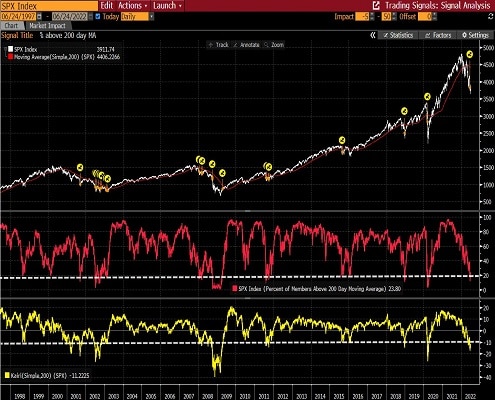“Most people will not wait for the environment to tip itself off. They will walk into the forest when it is still dark, while I wait until it gets light.” ~ Mark Weinstein
In this week’s Dirty Dozen [CHART PACK] we look at a yield-dependent tradeable bottom in equities, check out significant technical support, and take a look at the wide gap in price and EPS estimates and what this means. We then pitch a setup in oil, EURUSD, and a long trade in a beaten-down former HF hotel, plus more…
- Our current MO here at MO is to look for bullish setups within the dominant bear trend in equity markets. We’re doing this because we’ve been holding high amounts of cash all year (currently 83%) and though cash gives us optionality, it also comes with a high time cost, especially in an elevated inflationary regime.
We will continue to operate with the expectation that this is a bear market until the Fed shows signs of shifting gears due to lower inflation and the market is able to make a higher low, accompanied by large consecutive breadth thrusts.
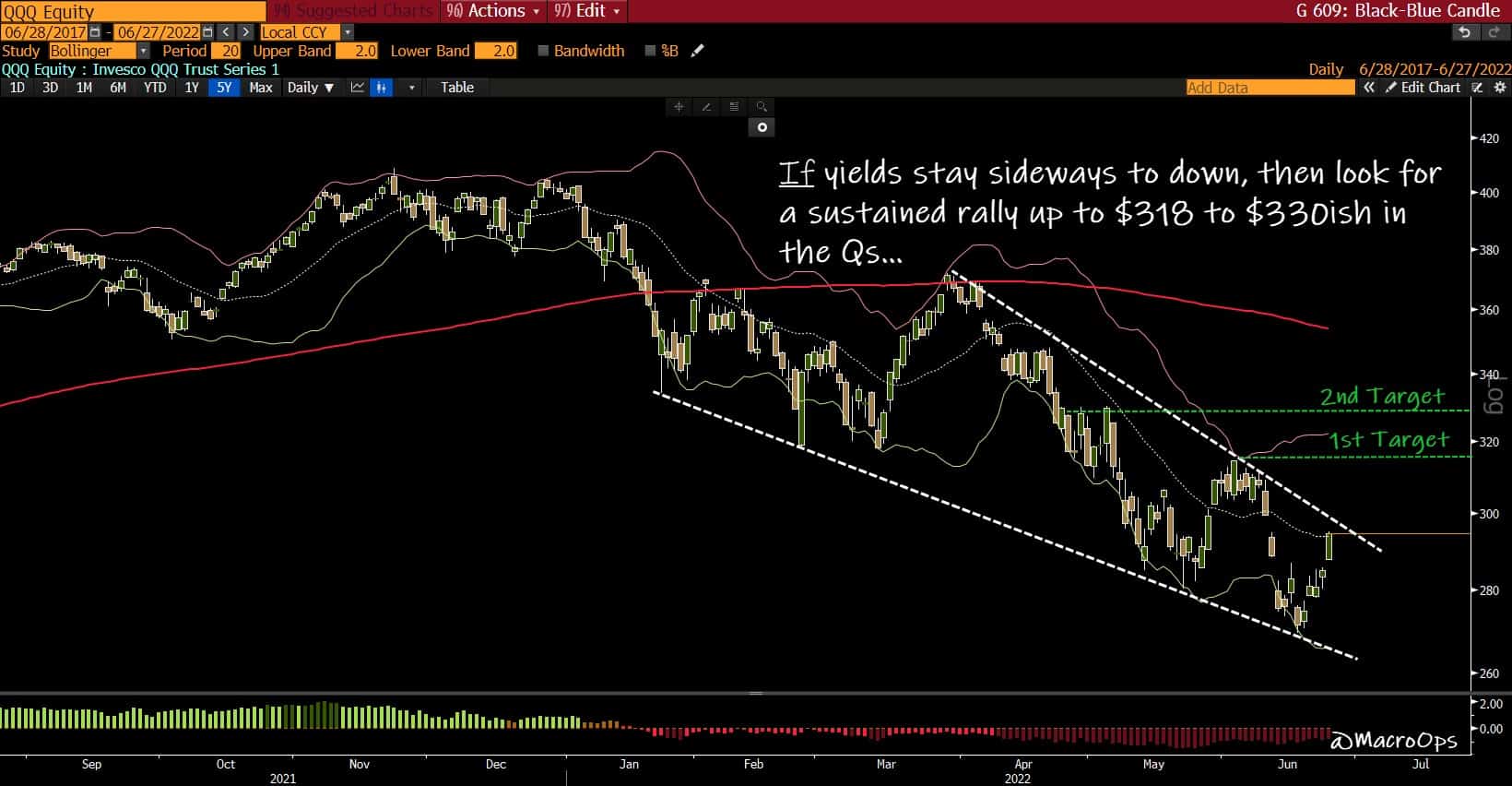
- Jesse Stine, who is one of the better market timers I know, put out a market update over the weekend (link here). I’m confused by his political takes but agree with his current technical and sentiment read of things. There are plenty of long-term charts at key technical levels which is worth taking note (lower monthly BBs, LT MAs, etc…).
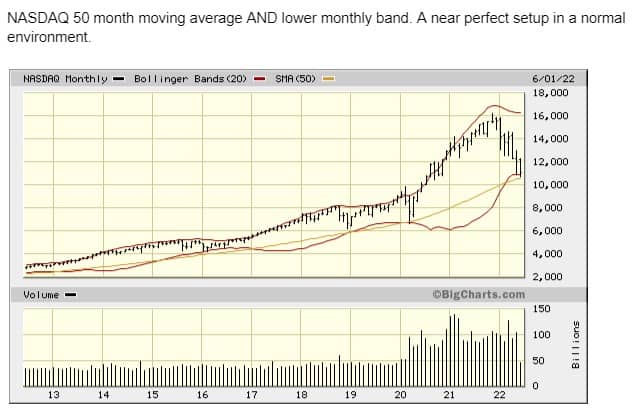
- BofA’s Net Tab (NT) indicator hit +6 last week, marking the most extreme oversold reading available on the indicator. The last +6 was March 2020. NT is a composite indicator consisting of “NYSE Stocks > 200-day MA, 5-week A/D Diffusion and 30-day Arms Index) and sentiment (Investors Intelligence % Bears, BofA Short-term Sentiment, and 25-day CBOE Put/Call ratio)”.
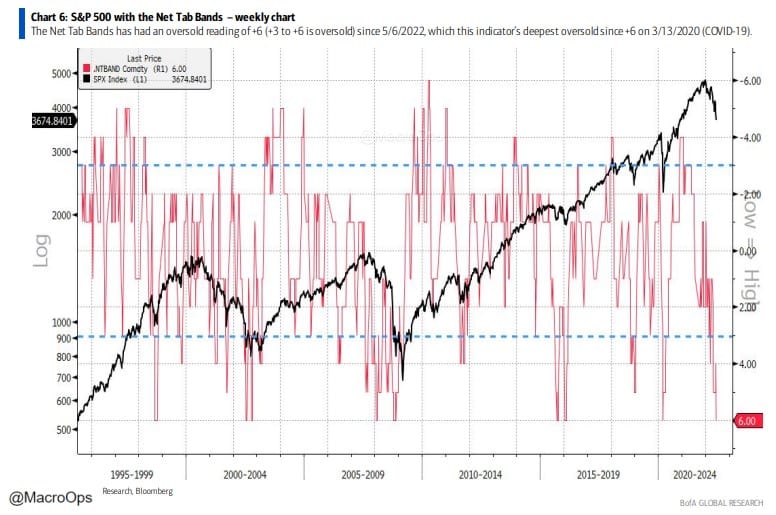
- BofA notes that “average and median 52-week returns after a +6 oversold on the Net Tab Bands are 17.5% and 18.7%, respectively, with the SPX up 92% of the time. This bodes well for US equities as the SPX tends to rally from 6/30 in the midterm year through 6/30 in the third year of the Presidential Cycle.”
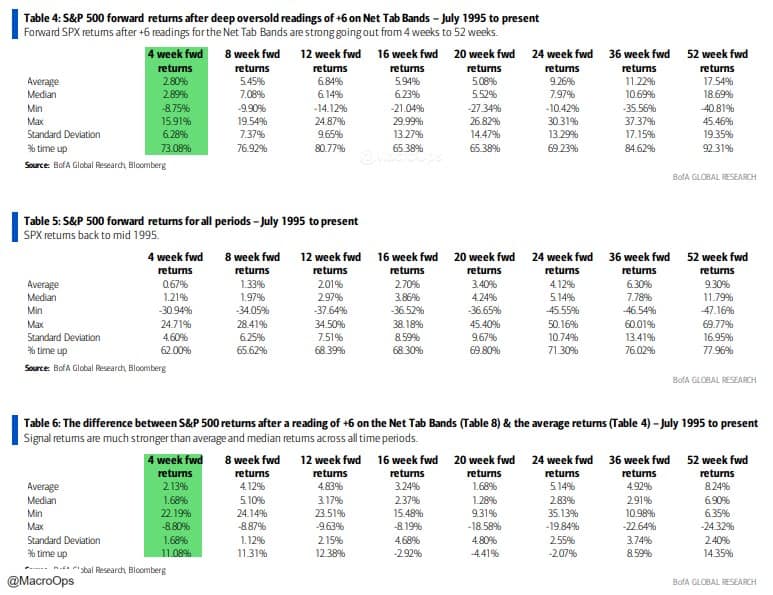
- The % of SPX members trading above their 200-day moving averages fell below 20% last week. The index is also trading more than 10% below its 200-day moving average. These are extremes and typically precede a major low or temporary low within a recession-driven bear market.
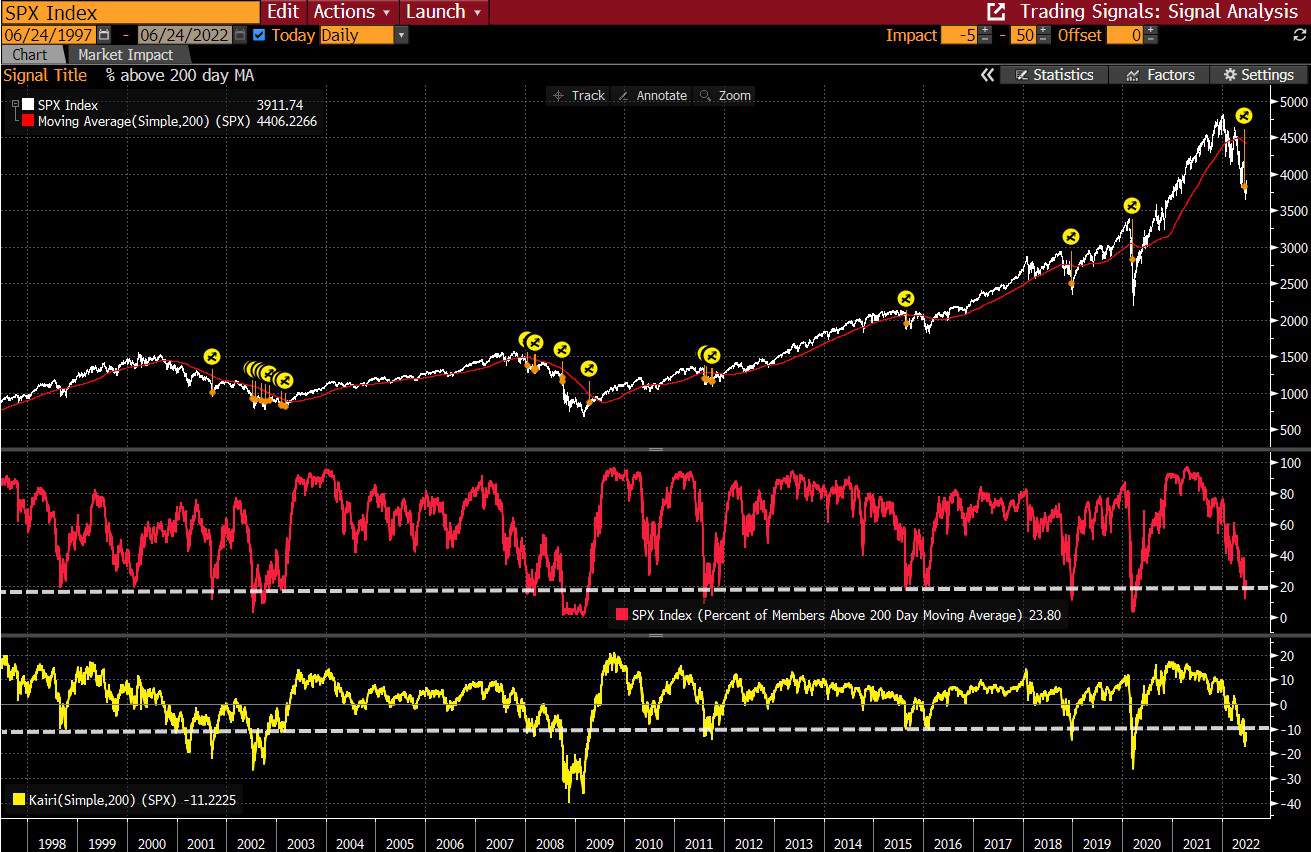
- There have been 25 instances over the past 25 years. 21 of these saw gains over the following month, with an average positive return of 5.95%. 3 traded lower with an average return of -10.6%. Those three losers were all in 08’.
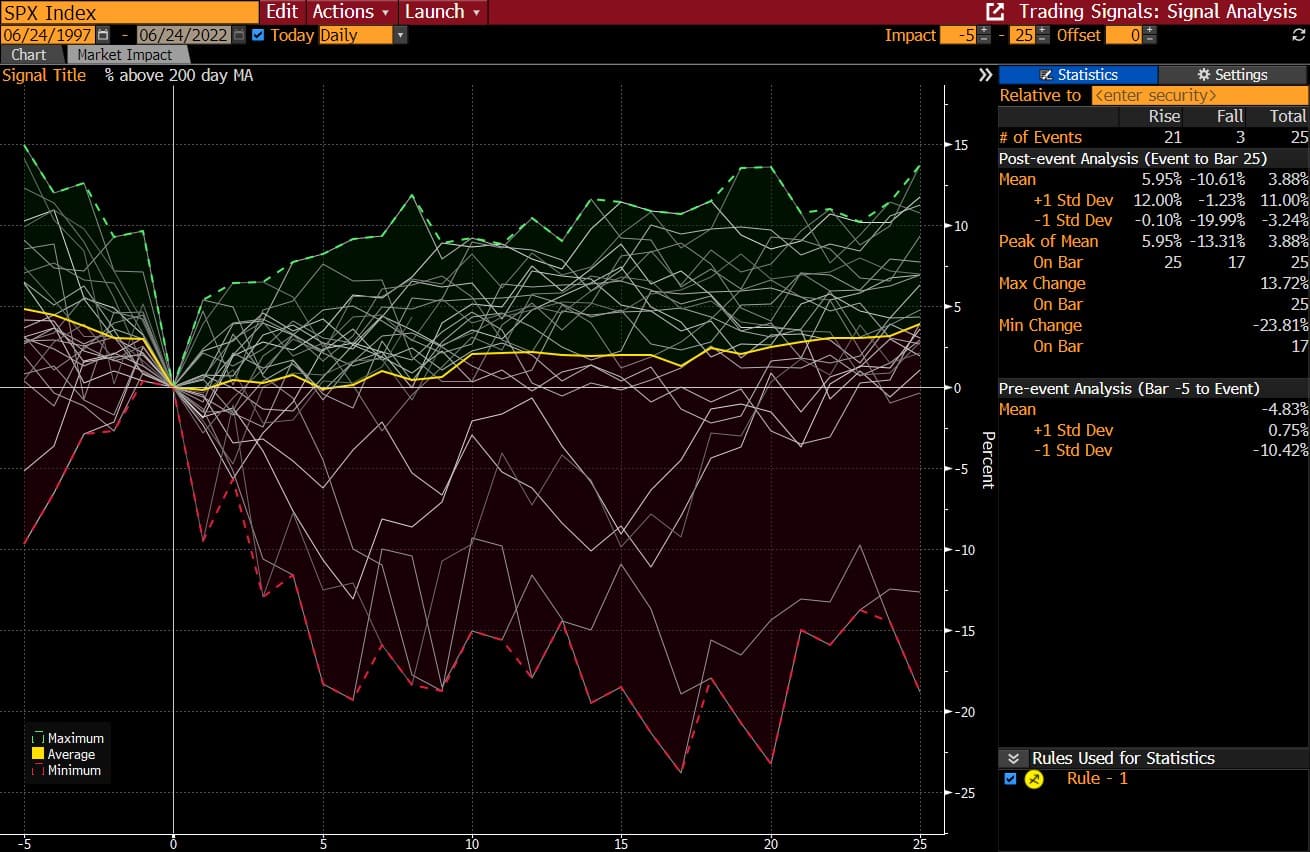
- The team at Stifel published a great market update that’s worth checking out (link here), h/t to @tom_morganKCP. This chart shows the Y/Y% SPX and its TTM Operating EPS on a Y/Y% basis. Earnings estimates have not kept up with the bearish narrative at all, which is normal as analysts are typically well behind the curve as they tend to chase price. But the Stifel team thinks the market has equally over-discounted the coming decline in earnings.
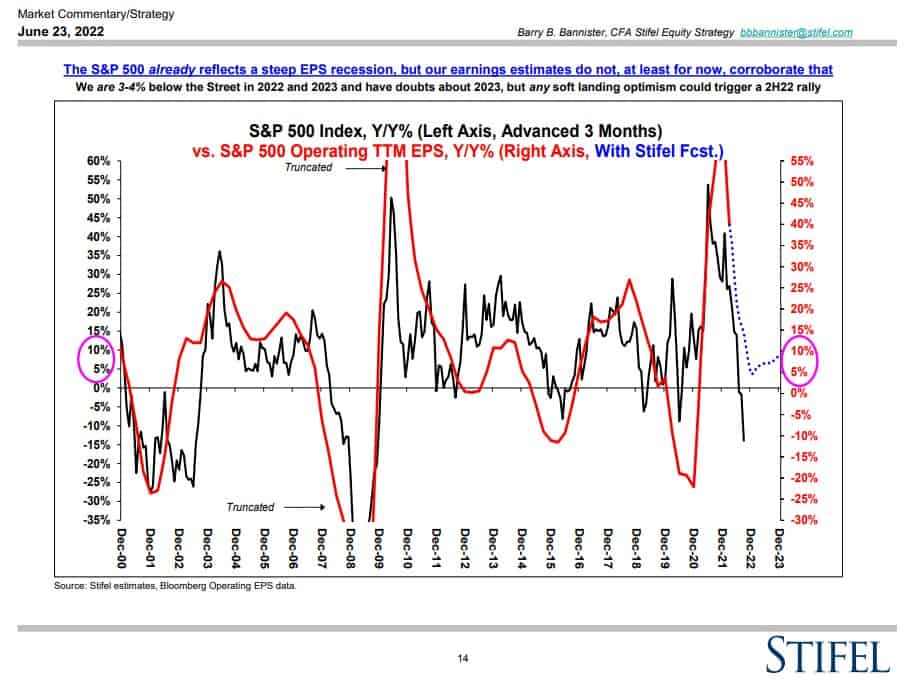
- Cameron Crise of BBG wrote on this topic in a note the other week and included a nifty way of visualizing this disparity using the spread between SPX 1yr drawdowns and forward 1yr EPS drawdowns. He pointed out that “gaps of this magnitude have only occurred during or immediately after recessions over the past three-plus decades.”
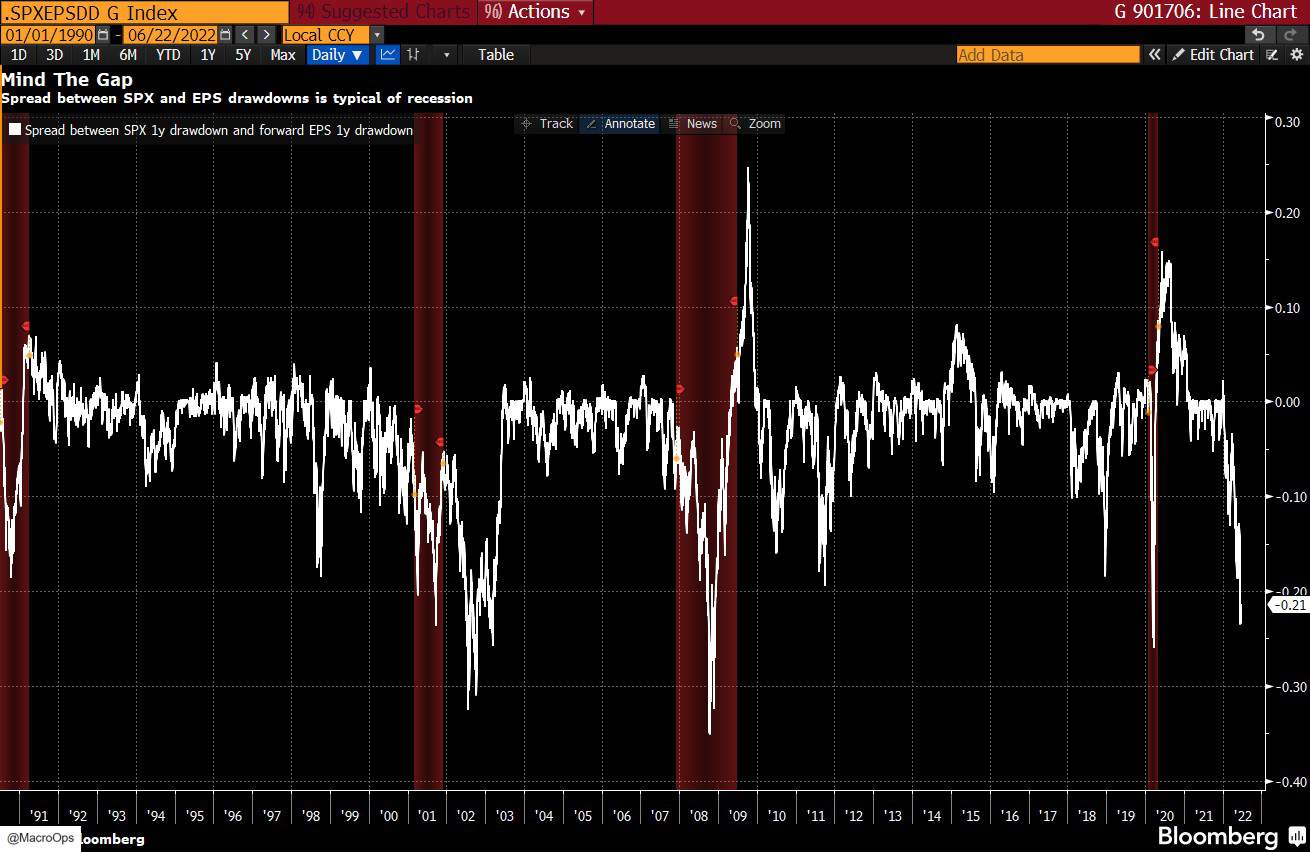
- @RenMacLLC has this great chart showing the average historical tendencies of SPX price and EPS revisions pre and post-growth trough. RenMac writes “Price troughs about 6w prior to growth trough. Revisions lag and continue to contract about 6w post-growth trough and 3m post-market trough. We haven’t seen revisions contract.”
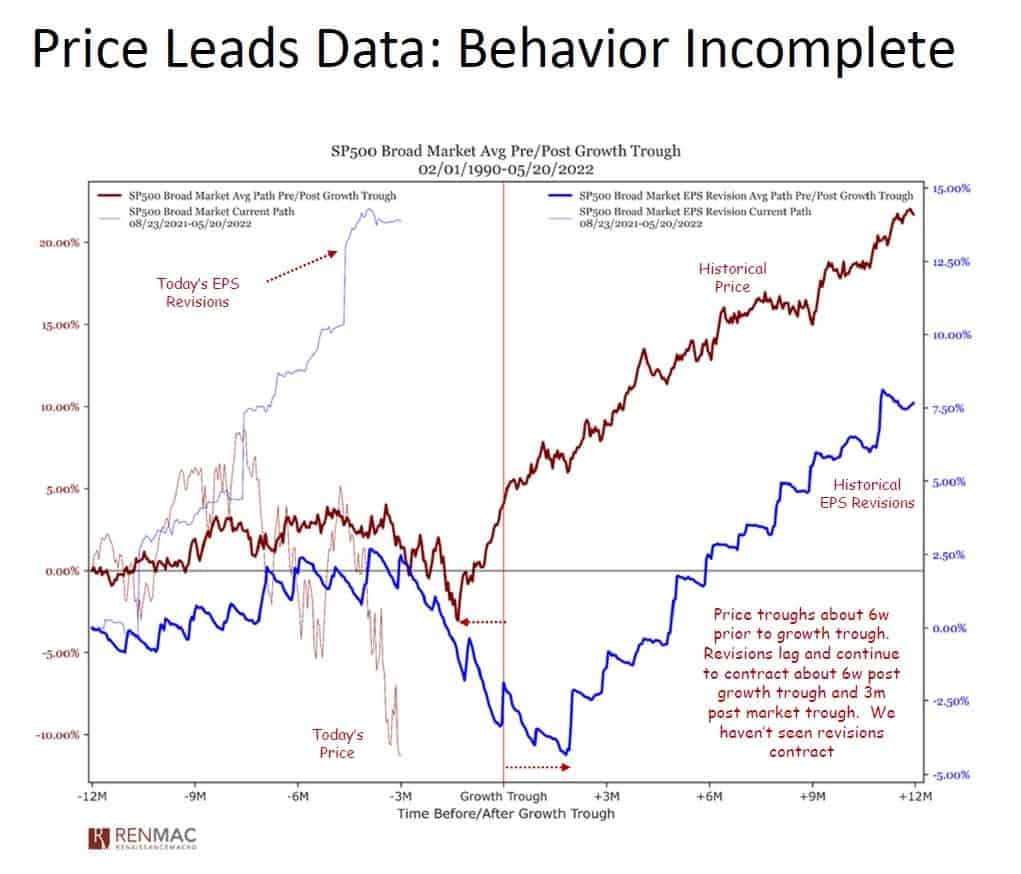
- Front month crude has retraced 15% from its recent highs. Coincidentally (or not), this happened right after hedge funds piled into oil and energy stocks last month. We’re long-term energy bulls (for reasons we explained here) but we’re also traders who look to protect our downside first and foremost, especially in uncertain environments (which this very much is). So we pared back our energy longs over the past month+ as the odds of a recession have risen materially due to the Fed’s aggressive shift.
But WTI is now down at its lower Bollinger Band within a Bull Quiet regime. This gives us a technical inflection point to place a trade. We can place a Buy Stop right above Friday’s highs and let the market pull us in if it bounces. And place a Sell Stop right below that candle. So we get long on a move above or flat or short on a move below.
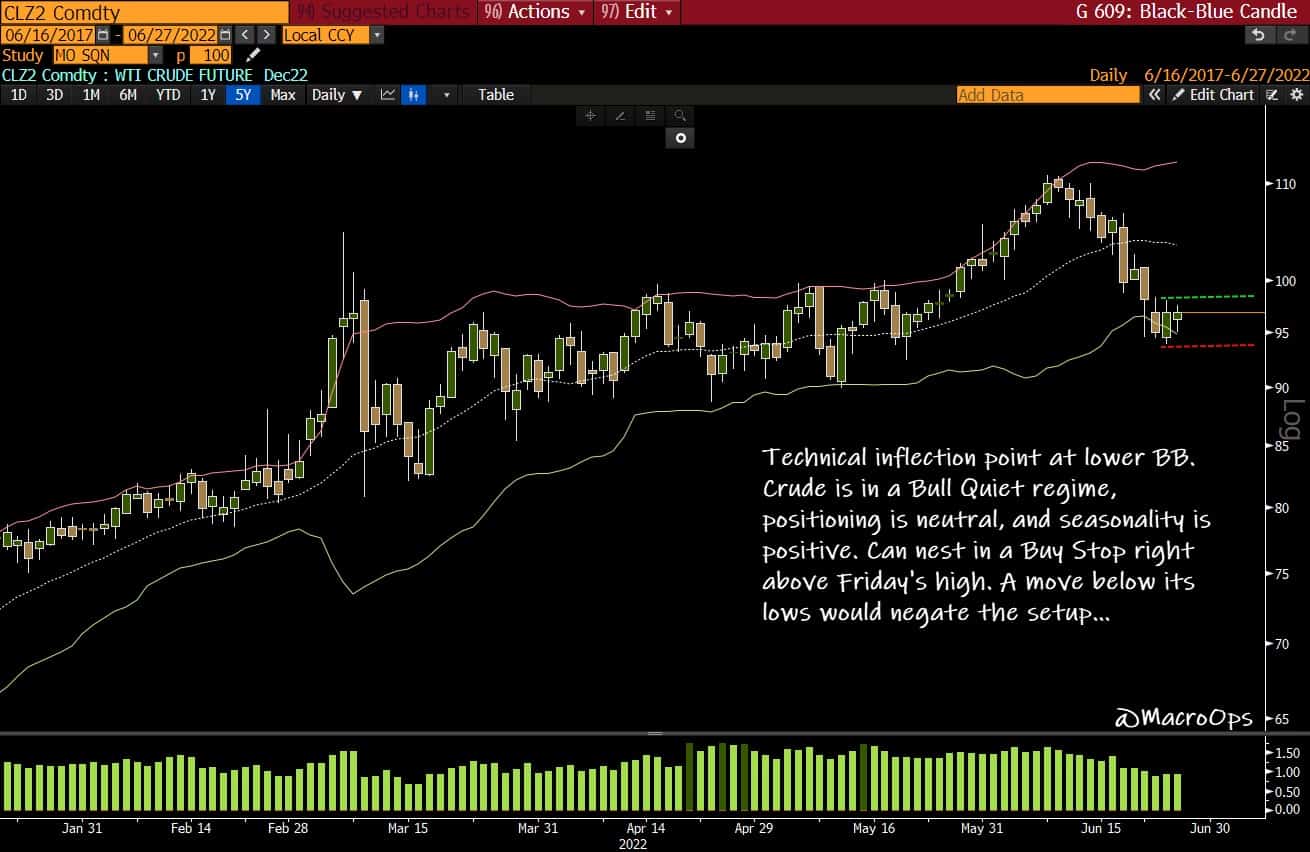
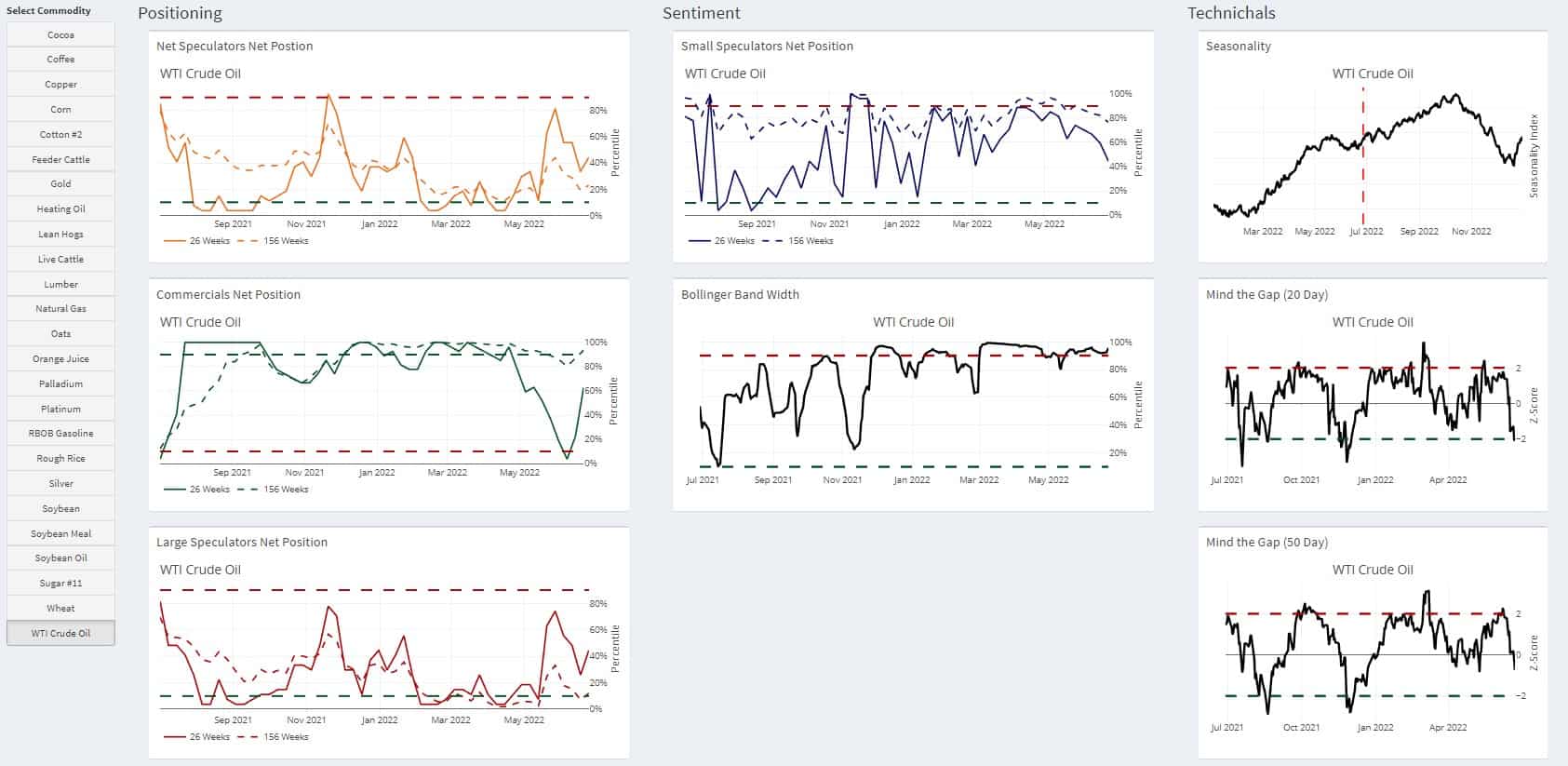
- I’ve been pointing out the major technical inflection point that EURUSD currently finds itself in for the past few weeks (link here). EURUSD is deeply oversold and cheap across every metric. So my bias is long here. But… Europe also has higher recession and geopolitical risk, so I can see the argument for a bearish break as well.
What’s great about a technical inflection point is that we can wait for price to tip its hand and give us the signal. And these signals typically precede sizable moves, which is all we really care about as traders. We will get long above the recent wedge or short on a break below.


- THE thing to watch for a durable and tradeable bottom in equity markets is yields. We bought Long Bonds early last week on signs that a bottom may be in (top in yields). If yields can hold here — trade sideways to down — then we should see a decent rally in the indices and a potential face ripper in some of the more beaten down / hated growthy tech names (such as CVNA which we bought early last week). Sea Limited (SE) is another one of these names that we’re going to add this week (if yields don’t start popping off again).
The stock is down over 80% from its recent highs. It’s put in a 3-wave bottom and is wedging tight after reversing off long-term support (green line). The company is cheap if you think it has a path to FCF within the next 2-years, which we do. And they have the cash on their BS to sustain them until they do.
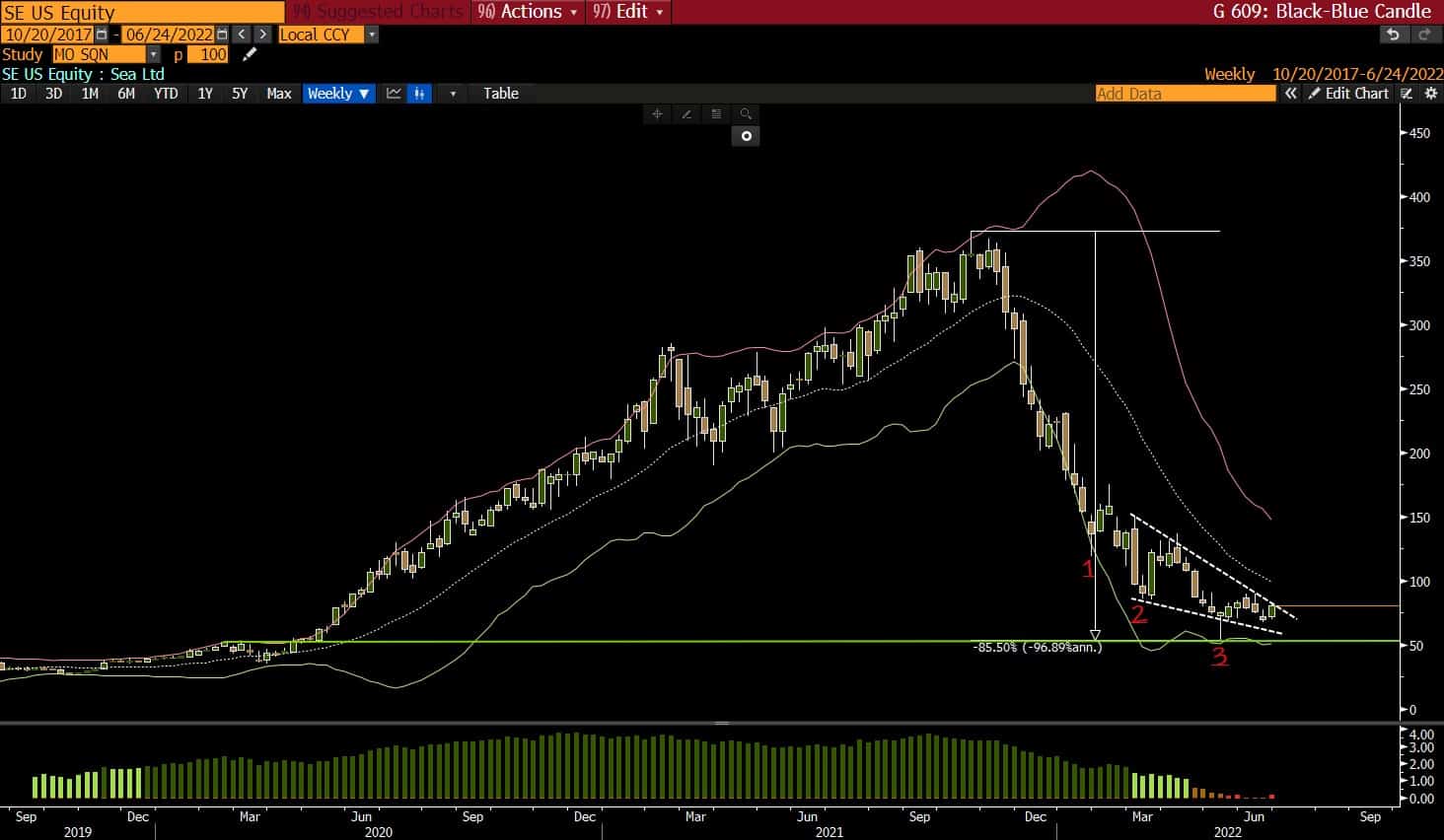
Thanks for reading.

